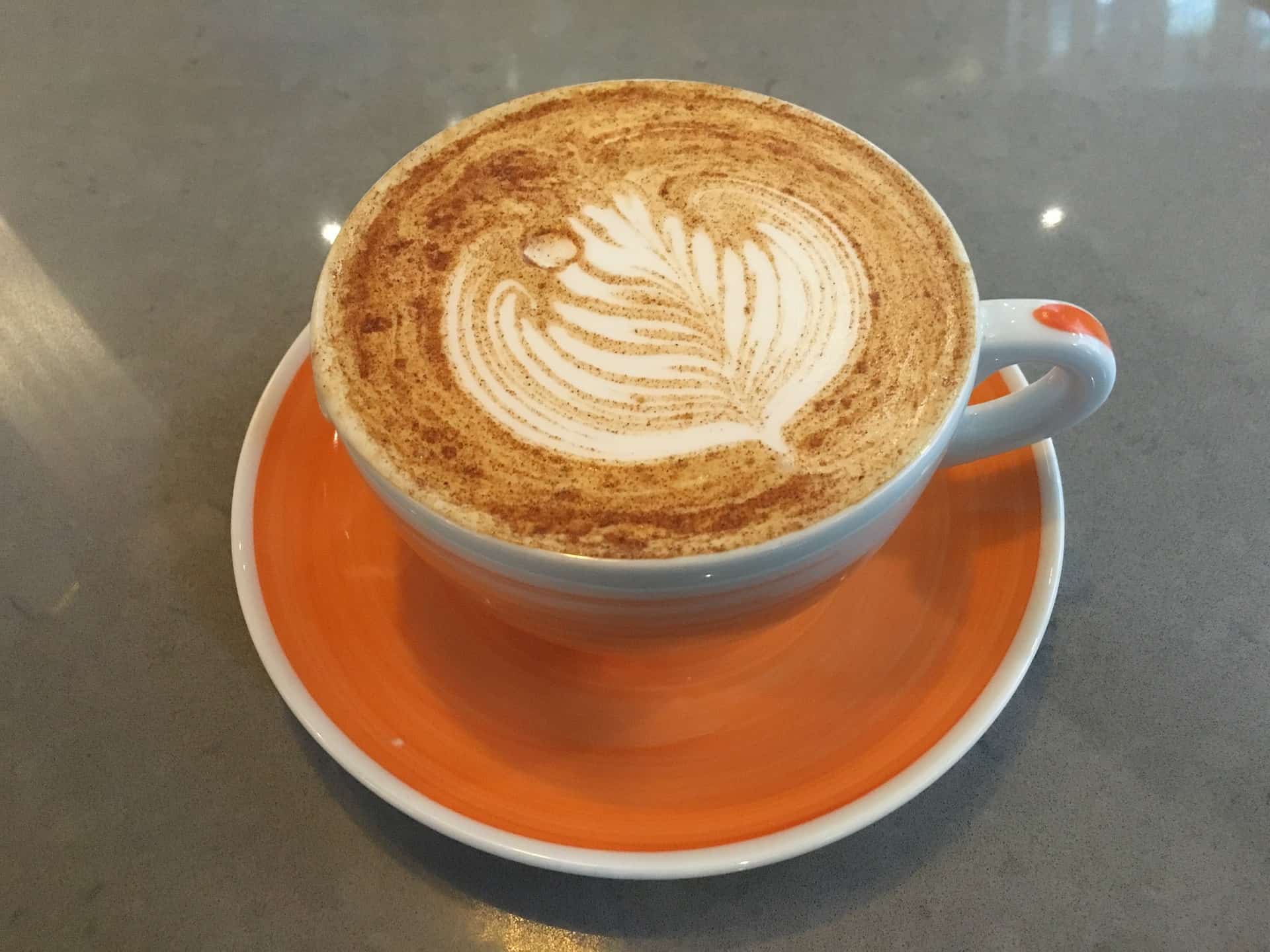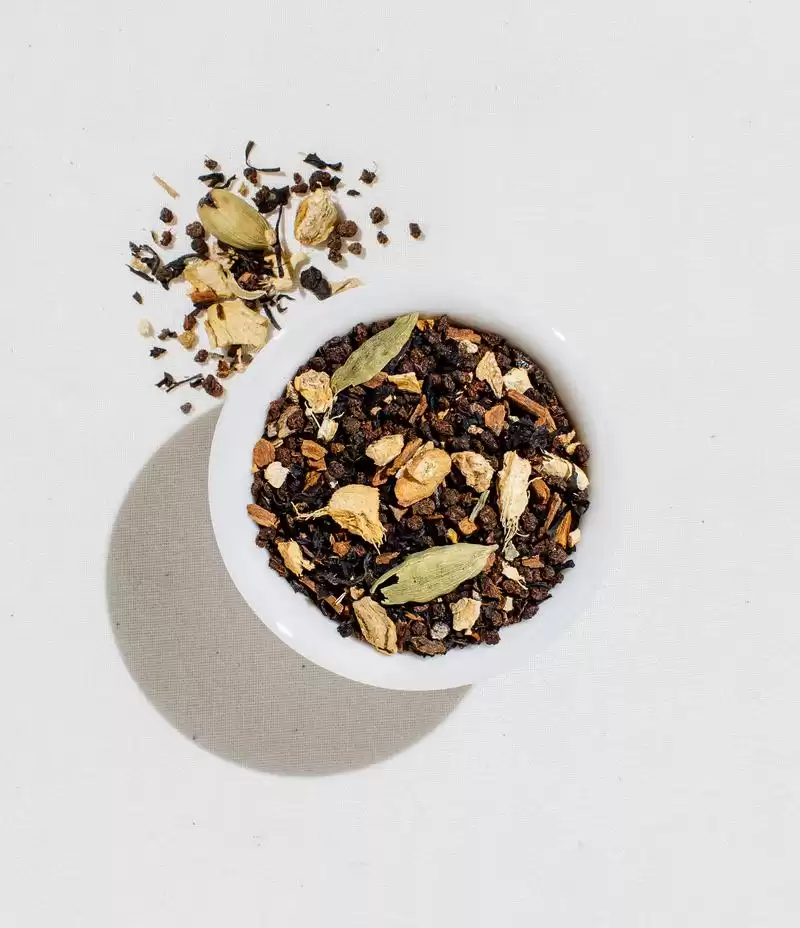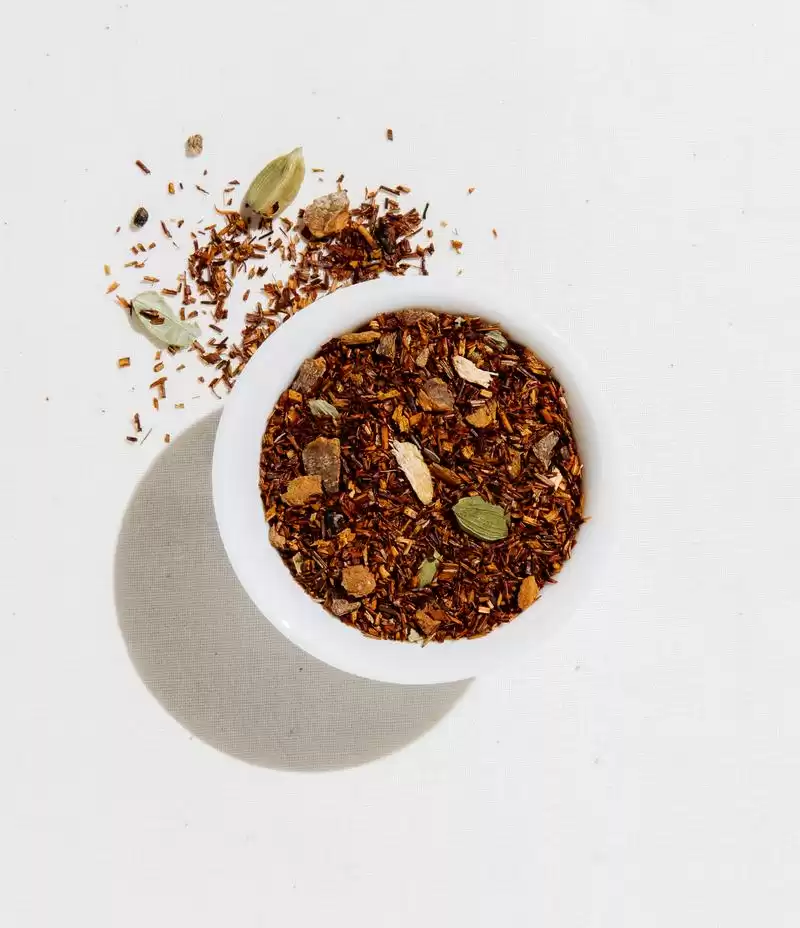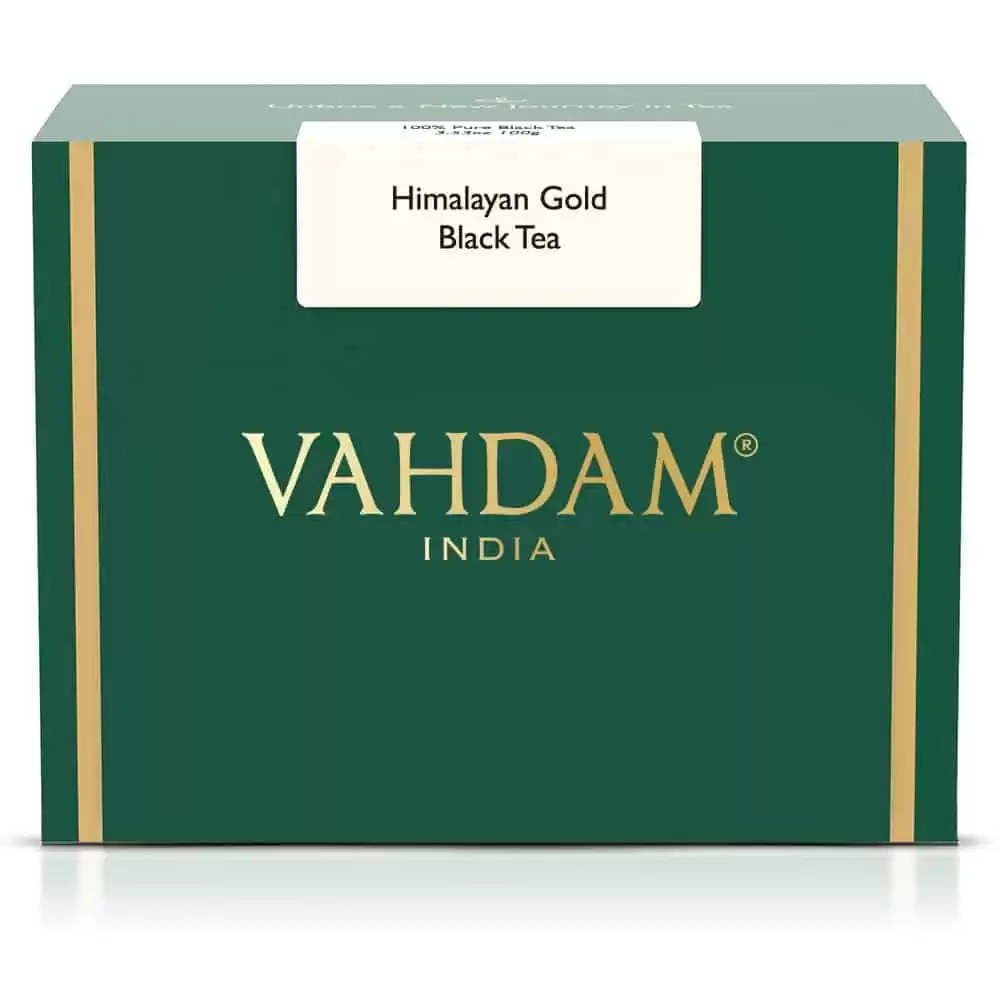I was in Canada when I had my first Chai tea. It was an interesting and unique blend of spices and herbs. Then they mix those spices in milk! I knew for sure that clove was a big part of my chai tea. In some parts of the world chai is just tea. Chai tea has a lot of health benefits which account for all the herbs and spices used. There are a variety of chai teas out there. While there are different chai teas there are always some common ingredients. What are those spices and herbs and how do you make your own chai tea?

The history of chai tea
If you live in the United States you are familiar with chai tea. Sometimes considered the Indian chai or more commonly known as Masala chai. Masala chai’s name has moved to chai or even chai tea. The name chai actually means tea, so by calling it chai tea you are actually referring to tea tea. 🙂
A combination of several spices with a sweet and spicy flavor. The aroma reminds me of holidays. For some reason in the Western world chai tea is often drunk in the colder months.
You would think that chai tea has been around as long as tea cultivation in India. Tea cultivation in India was around the 1850s. The drinking of chai tea did not begin until the later part of the 19th century. It was the British plantation owners that brought the spices and milk added to tea into the world. The spices used are called Masala and are the key flavor ingredients of chai tea.
In 1960 a process helped make Chai tea easily available to all people. That mechanized process is what makes our teas CTC. CTC stands for crush, tear and curl. This process with the tea leaf is sometimes looked down upon. As it takes a beautiful tea leaf and processes it down to the next step above the dust. This process allows the tea to mix with the spices and give it that glorious exotic flavor. It’s a deep tea with a dark brew and a robust flavor.
The folklore surrounding chai begins thousands of years ago. Some 5 to 9,000 years ago. I love the stories of how teas came to be. No matter when or how chai was created, one thing is for sure. We are glad it did.
A chai tea blend above all others. Tali's Masala Chai is a fusion of organic Assam tea anchored in cardamom, cinnamon, ginger, and other spices for a balanced aromatic black tea blend.
Most masala or chai teas were drunk for medicinal purposes. The spices and ingredients of chai tea have detoxing ayurvedic benefits. It’s a sweet spice exotic treasure. Today they are enjoyed around the world as an exotic cup of tea.
Today you can find chai tea on every street (almost) in India. The video below shows you what it is like being served tea by a chai wallah or tea person. The tea’s served from a high point and poured into an awaiting cup. To say this needs talent is an understatement.
Special thanks to Aamchi Mumbai for the video!
Wonder if we can get our baristas to serve our chai like this?
The world is in love with the different chai teas. We move from Masala (spicy) tea to chai tea (tea, tea) to just plain chai (tea). The world takes a new spin on a classic by making it into a latte. An iced version of the classic chai.
Creamy sweet coconut and playfully floral lemongrass highlight this succulent black tea chai blend. Let the aroma draw you in and you'll swear, you hear it beckoning to come closer, just take a sip
What is chai tea (made of)
The interesting and most unique part of chai tea is the brew is mostly made of milk and sometimes a little bit of water. Most chai tea is sweetened with unrefined cane sugar. In India, this sugar is called jaggery. Some do drink it without a sweetener. I like mine with a sweetening herb like licorice. Most of the world knows and loves chai tea that’s made with
The first chai teas were made with buffalo milk. Very high in fat b flavor mixed with the spices and tea are like no other. Buffalo milk is high in fast and you can substitute buffalo milk for any milk you desire. Once only dairy products were used as the milk base. Today a variety of milk substitutes are used to create a wonderful non-dairy chai tea.
The chai tea blend is not standard and varies by creator. But all chai have a few things in common. Starting with some
- Cardamom
- Cinnamon
- Clove
- Fennel
- Black Pepper
- Some add
- Star Anise
- Coriander
- Peppercorn
While most people enjoy the blend of spices brewing in their cup there are other ways to enjoy chai tea. One of those ways is by concentrated mix. These can be found in most stores. Some tea shops also offer chai tea lattes which are created by using a concentrated mix.
Chai has and is made with a variety of spices. The base of chai tea is generally a
Here are some examples of the variety of chai teas. Each is made in its unique way.
Masala Chai – Where it all began, centuries ago. A mix of
Noon Chai – Also known as Kashmiri pink chai. A morning or afternoon chai. Why is it pink? Green teas are brewed in baking soda until thick and deep red/brown. This takes about 45 minutes. Dilute with water, and add milk and salt.
Irani Chai – Authentic Dum Chai. Often served in white ceramic cups with saucers. Made with
Namak Wali Chai – It’s all in the name. Namak is salt. Adding salt to your chai may sound a bit “off” but it brings a delightful taste and unique flavor to your cup.
Kaladakka Chai – Kadak chai is a strong Indian chai. Made with water, milk, loose-leaf
Lai Chai – Also known as Hong Kong’s Milk Tea. How popular is this chai? In a year’s time, it’s estimated that 900 million cups of this tea will be consumed in Hong Kong. That’s a lot of tea. Simple ingredients are created in a unique way, as in all chai teas.
Gud Ki Chai – Like other chai tea with one difference. Jaggery or sugar is incorporated into the saucepan of milk and spices. Sometimes powdered sugar is added. Less time to cook and make it a unique version of chai.
Gud Wali Chai – Tea leaves, water, milk, peppercorns, cardamom, and jaggery powder. The key to making this tea is not to curdle the milk. If you make it right your cup will be delightful.
Bengali Chai – Said to be a favorite of New York City taxi drivers. This tea will keep you going. Bengali tea is created with
Cutting Chai – Interesting name. Cutting chai means to cut in half. So cutting chai is severed in tiny special glasses in small amounts. Cutting chai ingredients are water, cardamom, ginger, tea or tea powder, sugar, and milk.
With all the different chai teas and I am sure I left some out. You can see the similarity in the ingredients. The difference is how they are created and some are unique by the way they are served. What matters most is the order you put in the ingredients. That, right there will give the tea its unique flavor to match its name!
Chocolate flavored Ceylon black tea is blended with cinnamon, ginger, and cocoa nibs. Soothing spicy cocoa notes, zesty, warming quality and soft liquid chocolate texture.
Chai tea benefits
Being so full of spices, chai tea has to be full of health benefits. While we are used to exploring the health benefits of teas from the Camellia Sinensis plant. Chai tea combines the benefits of several spices.
Black tea is noted for reducing blood pressure. Drinking three or more cups a day can be beneficial in lowering cholesterol levels.
Cinnamon – The cinnamon in your chai tea is noted for helping reduce the levels of cholesterol. The total, bad, and triglycerides have been shown to decrease by 30% in this study
Ginger (and cinnamon) – both have a positive effect on blood sugar levels. This study has shown that people taking up to 2 grams of ginger a day helps people with type 2 diabetes. Ginger can also lower blood sugar levels by up to 12%
Ginger is also great for settling an upset stomach, and calming nausea, even during pregnancy.
Cloves and Cardamom – are both great antibacterial sources. Both help with bacterial infections in the digestive system.
Black Pepper – Black pepper used in most chai recipes has an incredible anti-bacterial property.
Black pepper may also increase the enzymes in the stomach to help break down and process foods.
While all of these studies examine each individual element in chai tea, there are limited studies of the total effect that chai tea has on the body.
Adding some spice to your rooibos, or spicing up your chai. Rooibos adds a unique earthy flavor to all your teas, chai especially.
Can I make Chai tea at home?
If you must use concentrated chai tea, read the label. Make sure the ingredients you are getting are as basic and as close to bagged or loose chai tea as possible.
But making your own chai tea is not difficult. I also think about the smell of your home as the brew cooks and the scent lingers in your home. Magnificent.
In fact, I suggest you only make your own. You will not get the flavor you deserve out of a concentrated chai tea mix.
It’s simple enough and what matters is how you do it and in what order. But the ingredients can be as simple as:
- Water
- Milk
- Tea
If you are looking for a more spicy chai then add those spices you desire:
- Clove
- Cardamom
- Star Anise
- Cinnamon
- Ginger
- Pepper
And beyond
It’s really up to you and how you like your chai to taste.
Hand-plucked at an elevation between sea level and 600m, this tea is heavy and robust; it offers a spicy, fresh flavor and is gold in color.
Chai tea concerns
Like all things, moderation is key when drinking chai tea. No more than 400 milligrams of caffeine should be consumed in a day. If you are pregnant that number decreases by half.
Too much caffeine is not good for the heart and health of a person. Be mindful to read those labels and know where you are with caffeine.
If you are on blood thinners, have low blood pressure or have low blood sugar keep your intake of chai tea on the low end. The ginger in chai tea can have an adverse effect on these conditions.
Because milk is used to create chai. Those that are lactose intolerant or allergic need to avoid or use an alternate “milk” product such as a nut or soy milk.

Conclusion
I’ve never written and researched a blog post that I wanted to dive right into drinking some when I was done. I really want a chai. I want to create it myself and while I’d really love to be a chai wallah. I will save myself the mess to clean up for a later time. Raise a toast to the best chai tea ever made. The best chai teas and their benefits depend on you and what you put into the brew.
Let me know how you do and what chai you like best.






1 thought on “The Different Chai Teas and Their Benefits”
Pingback: Actuali-Thé: 6 au 12 février 2021 | Du thé et un dragon!